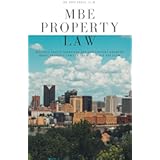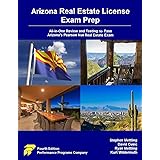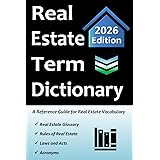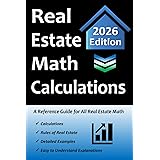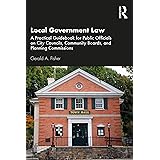The journey to financial freedom through real estate investing often feels like an uphill battle, especially when market conditions seem to conspire against the aspiring investor. Many hear stories of successful investors and immediately think, “But that was different then. Today’s market with its soaring prices and elevated interest rates makes finding good deals impossible.” Yet, as the accompanying video powerfully illustrates, this mindset is precisely what keeps potential investors from ever starting. The truth is, while the numbers have certainly shifted, the fundamental strategies for building significant wealth through real estate have not.
For decades, real estate has proven itself as the most powerful and lucrative wealth-building tool available. Its enduring power lies in its adaptability and the universal need for housing. Even with median home prices in the United States currently hovering around $430,000 (a significant jump from around $250,000 when many seasoned investors began) and mortgage rates reaching 7% or more (compared to the 3% that was once standard), opportunities still abound for those willing to learn, adapt, and act decisively. This comprehensive guide will expand on the blueprint for starting or restarting your real estate investment journey in 2025, detailing four crucial steps that empower you to navigate any market conditions and build a robust portfolio.
1. Building Your Solid Financial Foundation for Real Estate Investing
Before even considering your first property, the smart investor first constructs a robust financial foundation. This isn’t just about having cash; it’s about crafting a financial narrative that lenders trust. Imagine if you were to lose everything and had to rebuild from scratch with only your knowledge. The first order of business would be to prepare yourself for the scrutiny of banks and lenders. This critical groundwork involves three key pillars: building credit, establishing consistent job history, and strategically saving for a down payment.
Improving Your Credit Story
A strong credit profile isn’t just a number; it’s a story of financial responsibility. Lenders want to see a consistent, positive payment history. If your credit history is thin, a simple yet effective strategy is to open a few credit cards. Use them for everyday expenses like groceries and gas, and then pay the balances off in full each month. This builds a pattern of responsible usage without accumulating debt. It’s about demonstrating reliability, not about going on a shopping spree. Over time, this consistent behavior will significantly improve your credit score and the underlying “story” it tells to potential lenders.
Establishing a Dependable Job History
Lenders also look for stability in income. They typically prefer to see a two-year consistent work track record. This reassures them that you have a reliable source of income to make your mortgage payments. If you’re currently in a job you dislike but haven’t hit that two-year mark, consider the strategic advantage of staying put for just a little longer. It can open doors to traditional financing options that might otherwise be unavailable. A useful tip for recent graduates: some banks will count full-time college attendance as part of your work history if you transition directly into a job in the same field. This highlights the importance of presenting a picture of financial and professional stability.
Strategically Saving Your Down Payment
The down payment is often perceived as the biggest hurdle. While it’s true that a 3% down payment on a $300,000 home today translates to $9,000, compared to $3,300 for a $110,000 home in the past, it’s an achievable goal with discipline. The key is to consciously spend significantly less than you earn. This counteracts Parkinson’s Law of Consumption, where expenses tend to rise to meet income. Instead, dedicate yourself to extreme savings for one to two years. Consider cutting back on non-essentials like dining out or new clothes. Furthermore, explore the booming gig economy; side hustles offer excellent avenues to earn extra income specifically earmarked for your real estate goals. This initial phase isn’t about immediate comfort but about positioning yourself for future financial success.
2. Buying Smart: Unconventional Approaches to Your First Investment Property
With your financial foundation in place, the second step in your 2025 real estate plan involves making a truly smart first purchase. This means looking beyond what everyone else wants and focusing on properties that deliver immediate financial benefits, not just aesthetic appeal. Forget the notion of buying the “nicest” home for now; your first property is a strategic asset.
Seeking Deeply Discounted Properties
Even in a competitive market, deeply discounted properties—20%, 30%, or even 50% below market value—are still out there. The challenge is that they are “invisible” to those who aren’t actively looking or lack the guidance to find them. Instead of relying solely on realtors initially, consider “driving for dollars.” This involves physically driving through target neighborhoods, looking for “for sale by owner” signs, neglected properties, or those that simply look like they might be ready for a motivated seller. These off-market deals often provide the best opportunities for significant discounts. Once you identify a potential property, leverage your network, especially a mentor, to help verify its true market value and assess its investment potential.
The Power of House Hacking
House hacking remains one of the most effective strategies for new investors. This involves buying a multi-unit property (like a duplex or a home with a separate basement apartment) or even a single-family home with extra rooms, living in one part, and renting out the others. Imagine living virtually rent-free, or at least having a significant portion of your mortgage covered by tenant income. This strategy allows you to build equity from day one without the crushing burden of a full mortgage payment. It might not be glamorous, but it drastically reduces your living expenses, frees up cash flow, and accelerates your wealth-building journey.
The Indispensable Role of a Mentor
Finding discounted properties and implementing strategies like house hacking becomes significantly easier with the right guidance. A mentor who has navigated various market cycles can provide invaluable insights, help you identify legitimate deals, and warn you against potential pitfalls. They teach you where to look, how to analyze deals, and what to say. If you don’t yet have a personal mentor, resources like books, online courses, and communities focused on real estate investing can serve as an excellent starting point, laying the groundwork for more advanced mentorship later. This guidance is not just theoretical; it’s about practical application and learning the “ropes” from someone who’s already walked the path.
3. Leveraging Equity for Accelerated Growth
Once you’ve successfully acquired your first smart investment property, the next step is to use its growing value to fuel further expansion. This is where the magic of leveraging equity comes into play, enabling you to acquire additional properties without needing substantial new capital.
Understanding Home Equity Lines of Credit (HELOCs)
After owning your first property for about a year, especially if you bought it below market value or in an appreciating area, you’ll likely have built up significant equity. A Home Equity Line of Credit (HELOC) is a powerful tool that allows you to borrow against that equity. Think of it like a flexible credit card, but backed by your home’s value, offering access to capital at often favorable interest rates. Unlike a traditional loan, you only pay interest on the amount you actually use. This cash is essentially “free” until you draw on it, providing a ready source of funds for your next investment.
In today’s market, many Americans are “equity rich” but “cash poor.” The average American homeowner, for instance, has approximately $304,000 worth of equity in their primary residence. Banks are often willing to lend a substantial portion of this—potentially $100,000 or even $200,000—through a HELOC. This readily available capital can be used as a down payment for your next investment property, effectively allowing your first house to “buy” your second, and so on. This strategy works just as well in 2025 as it did decades ago.
Strategic Application of HELOC Funds
With a HELOC, you have the financial agility to act quickly when a deal presents itself. Imagine finding a property listed for $160,000 that’s truly worth $250,000 – a $90,000 discount. With a HELOC providing immediate access to funds, you can place that property under contract swiftly, often before other buyers can secure traditional financing. This allows you to capitalize on time-sensitive opportunities and acquire properties significantly below market value, accelerating your portfolio growth. It’s crucial, however, to use these funds specifically for real estate investments, avoiding the temptation to venture into speculative ventures outside your expertise.
4. The Mindset of a Successful Real Estate Investor
Ultimately, your success in real estate investing hinges less on market conditions and more on your mindset. The final, and arguably most critical, step is cultivating an unwavering belief in possibility and a commitment to action, even amidst uncertainty.
Overcoming Indecision and Victimhood
Many aspiring investors remain stuck not because of high prices or interest rates, but due to indecision. They wait for “perfect” market conditions—for prices to drop, for interest rates to fall, or for someone else to give them permission to begin. This passive waiting is a form of victimhood, where individuals relinquish their power to external circumstances. The most successful investors understand that perfect conditions rarely exist. They adapt to the current environment, finding creative solutions rather than waiting for ideal circumstances.
Embrace the belief that there’s always a way, and then actively seek it out. Real estate investing is a game of consistent action, learning, and adaptation. If you’re waiting for the economy to “turn around” before taking action, you’re already behind. The greatest gains are often made by those who act decisively in times of uncertainty, leaning into challenges rather than shying away.
Adopting a Blueprint for Consistent Action
Successful real estate investors don’t rely on luck; they follow a proven blueprint. This systematic approach allows them to consistently execute deals, whether the market is up or down. For instance, following a structured plan can lead to thousands of transactions and billions in total value, demonstrating the power of a repeatable process. Take back your power today. Make the decision to become a real estate investor and commit to starting. With a clear plan, unwavering belief, and a bias for action, you too can navigate the complexities of the 2025 real estate market and build substantial wealth. This systematic approach is the foundation for lasting success in real estate investing.




